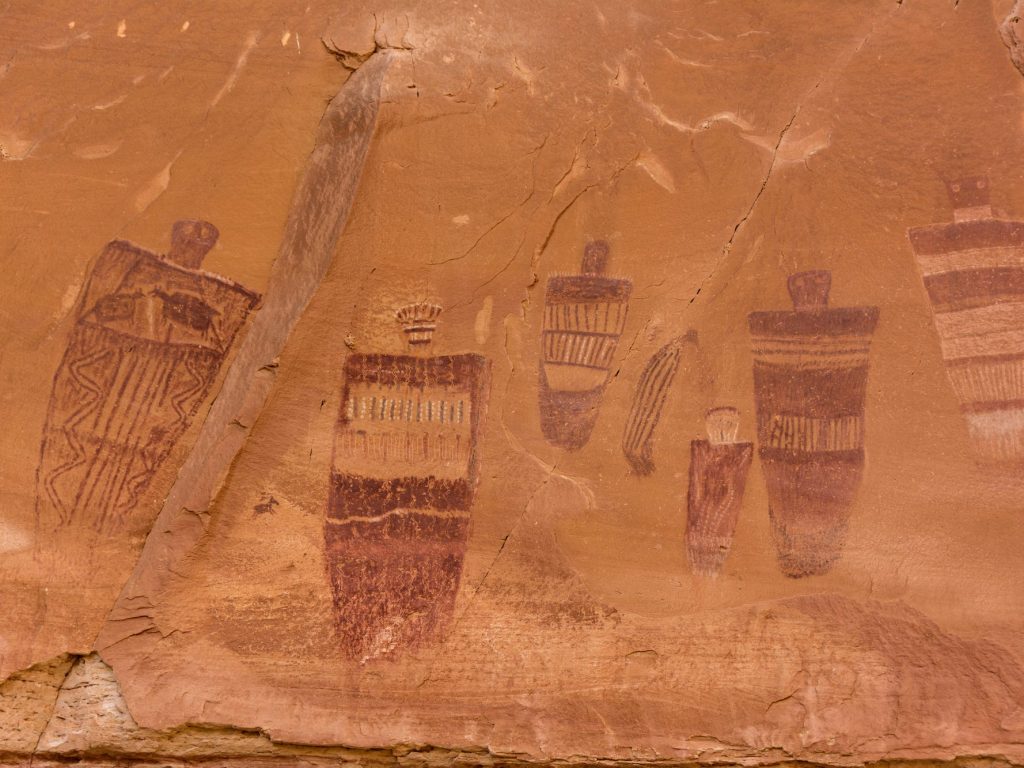- A study found large humanoid figures carved on the ceiling of an Alabama cave more than 1000 years ago.
- The figures could represent beings of the supernatural world whose names have been lost.
- Hi-tech technology was needed to see them in the low ceiling cave.
A scientific study has uncovered massive, ghostly figures carved into the ceiling of an Alabama cave more than 1,000-years ago.
The figures, three of which were humanoid in shape, are among the biggest ever uncovered in the Northern Americas. Some are more than 6ft long per a study presenting the findings published in the peer-reviewed journal Antiquity on Tuesday.
Known as glyphs, the unique carvings sculpted in the soft mud on the cave's ceiling could provide clues into the traditions of Native American peoples of this southeastern US, say the study's authors.
"We know that Native Americans over a very wide area have certain ideas in their religious concepts that they share. They believe in a tiered universe," said archeologist Jan Simek.
"They believed that there were these spirit worlds all around them that permeate the natural world, even though you couldn't see them," he said.

Invisible figures revealed by months of tenuous work
The project was decades in the making for the paper's authors — archeologist Jan Simek and photographers Alvarez and Alan Cressler.
Despite this, they could not document the artwork because of a simple, technically challenging barrier: The cave ceiling is so close to the floor that it was impossible to take good pictures of the carvings.
Alvarez first tried to document the glyphs as a photographer on a National Geographic assignment in 1999. "The images were so faint!" he told Insider.
"I feel like there are stories that get entrusted to me," said Alvarez. "That was the motivation behind doing all the work."

Finally, hi-tech 3D photogrammetry would be the key to capturing the glyphs. It can read the minute variation in light between two images taken a few inches apart to draw precise 3D models of objects.
It was still a grueling, month-long task to capture more than 16,000 pictures that very slightly overlap to map out the entire cave ceiling.
"It took like years for my knees to recover. It's just kneeling and stooping for hours and hours and hours in days and days and days on end," Alvarez said.
Finally able to digitally lower the cave floor they first glimpsed the enormous humanoid glyphs.
Deciphering an ancient story for the first time in millennia
The glyphs portray what archeologists call anthropomorphs, figures that could either represent humans in costumes and masks or humanoid spirits, Simek said.
These characters were probably deeply ingrained in the culture of the people living near the cave so that they could understand who they were from seeing only a part of them, Simek said.

The style of the drawings in the Alabama cave is reminiscent of figures seen in the midwest and the western US. They are very large with square shoulders, ghost-like, with headgear and elaborate clothing, and directly face the viewer. That suggests that these figures represented inhabitants of the supernatural world, per the study.
One example of similar anthropomorphs can be seen in the Barrier Canyon in Utah.

However, the study authors have not been able to link the Alabama figures to recognizable characters recorded in southeast Native American stories.
"They clearly represent a character or a set of characters that we've never seen before," said Simek.
Philip Carr, a professor of Native American Studies and Anthropology at the University of South Alabama who was not involved in the study, was complimentary of the work.
"It is the work of archaeological teams such as this one that provide those rare glimpses into past ideologies that leave us wanting to know even more," he told Insider.
"Are these figures related to the underworld? If so, what was the relationship of the people who drew them to those beings of the underworld?"

Rediscovering the old to inform the new
We know little about the people that would have lived around that cave 1,000 and 1,500 years ago, what is called the Middle Woodland phase.
"We don't have the kind of documentation about artwork that we have for later time periods," said Simek. "We know the archeological context, but even that is relatively hard to find that at this date," he said.
These findings are relevant to present-day Native American communities, which see these traditions as part of their heritage, Simek said.

"Their descendants are the native people of the southeast that were in the region when Europeans arrived: The Cherokees, the Creeks, Muscogee people, Choctaw, Chickasaw," he said.
"These people and their culture are vibrant and alive. Europeans moved them out of the Southeast forcibly, to Oklahoma, to reservations that were not their homeland. But they still maintain their connectivity," he said.
"Archeology is not always about the dead," Simek said.

